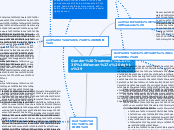Gender Treatment
(Women's rights)
unit 4
(Montreal Massacre)
December 6, 1989 Marc Lepine walked into
Ecole Poly Technique lined up all the women. He continued
through the school killing 14 women and shooting 28
Primary Source:
" You're all a bunch of feminists
and i hate feminists"
(Armstrong, Julia, Rachel Collishaw, John Piper, and John Ruypers. 2014. History uncovered: Canadian history since World War I.)
This relates to the issue of gender
treatment because the beleifs of Marc Lepine
were that feminists were bad and women
should be less then men. This revealed that women
were treated much differently and were not accepted
for who they are.
Unit 3
(The Cold War)
women were expected to have children by age 21.
condoms were illegal as no one was supposed
be having sex before marriage. Men cheating on their
wives was common and the wives did not do much about
it. men and women coming back from war wanted to go
back to a normal life which caused the "baby boom". Government encouraged women to have children by giving a baby bonus of $6 per month.
Primary source:
The Canadian fertility rate increased
in 1950's to about 3.6 compared to 2.6 in 1936.
(Armstrong, Julia, Rachel Collishaw, John Piper, and John Ruypers. 2014. History uncovered: Canadian history since World War I.)
After the war women were there to have children
as a sense of security that they wont have to go back to war.
The baby boom and the fertility numbers was the first time it occurred in Canada. The rate increased because of the baby bonus provided by the government which made more people want more kids.
unit 2:
(WWII)
1939-1945 women started to work,
Canada needed them to pitch in and support
the war, they worked jobs that were traditionally
mens ( war, farming, business owners, factories).
Daycare was provided so women were able to work
and not have to worry about staying home and watching
their children.
Primary source:
Canadian population of 11 million
about 600,000 Canadian women
held jobs when the war started,
during the war their numbers doubled to 1,200,000
(Veterans Affairs of Canada, Women at War. June 17,2018, www.vac-acc.gc.ca)
this primary source links to the event
by creating a long lasting change, if women never
stepped up in WWII they would still be treated the same
in today's society. The event revealed that the past was not
so good to women and how the numbers were a shock to the world as a result. The world was shocked because they saw women were able to wok and not just be stay at home moms.
Unit 1
(WWI)
In 1914 women's roles were limited to
children, looking after the household, and often
looking after the family farm. Some women worked
as maids, nurses, teachers or in factories, majority stopped
working outside the home after marriage. Women were called
on in WWI to contribute in traditional and non-traditional ways, they joined the forces as drivers in the air force and nurses in the front lines. When the war was over many women were expected to return to their pre-war jobs.
Primary source:
Canadian nurse Sophie Horner describing her work at a field hospital near the front lines (June 10 1915) - " This is the most interesting
and by far the most worth while
work i have yet done. It's wonderful
to me that I have had the opportunity
of doing something for these brave fellows".
(Armstrong, Julia, Rachel Collishaw, John Piper, and John Ruypers. 2014. History uncovered: Canadian history since World War I.)
This quote shows that women enjoyed
being in the workforce and grateful to be able
to help out the soldiers at war. This was the first time
it had occurred and was a huge step in history for women
in Canada.
